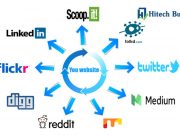Once a document has been sent to a client or user it can be difficult to tell whether it is being used for the right reasons. After all, its use is at the discretion of the user. However, certain patterns of how the document is used can shed some light on the situation.
Document Tracking
So, most companies with document security protocols advise that work should not be taken home. This is because there is a higher likelihood of a breach in the home setup than in the office setup as chances are greater that the spouse or children or even a guest will see the document in the home. They may be using the user’s home computer on which the document might have accidentally been left open or the authorized party might have gotten distracted and left a printed version on the coffee table. Assuming the document in question was sensitive, such unauthorized viewings could be detrimental to a company.
Also, if there is no tracking being done, it is impossible to tell whether the document was opened at home or at the office. The same goes for printing. Luckily, document tracking will tell you each time a document was opened and printed and from where this was done. However, it can only do so with online versions of documents that require some sort of check with a server whenever the documents are opened. Offline documents have no such controls.
So, with tracking, whenever an unauthorized party tries to access a restricted document, it will be reflected in the tracking logs. This information can then be used to determine periods where parties involved should be on high alert and exercise vigilance when handling sensitive documents. And, in the case of court trials, the tracking logs can be presented as evidence to show document usage by certain people.
In addition, with tracking, it is also impossible for an employee to feign ignorance or to say that they did not receive the said document if the log shows differently.
Document Security Arsenal
For authors looking to increase their sales, document tracking can also be used as a marketing strategy. It can give a comprehensive overview of which PDFs or documents are opened more frequently. The author can then see which books are more popular with the masses and then write more in that genre or use the style that people like. The result will be an increase in book sales.
But, it is important to remember that privacy is becoming more and more of an issue particularly on the internet. Collecting information on document usage can be seen as a breach as it entails collecting IP addresses and other user identifiable information. Those tracking document usage must thus have consent from the users before they can do it. Consent can be implied in employment contracts or in the terms and conditions of allowing document use. It is also paramount that people define and register what they are going to use that collected information for before they can start collecting it.
Nevertheless, there are some problems associated with document tracking. One is that you are never quite sure who is using a particular PC, even if the PC is authorized. So, you can never really know who opened the document. Also, the login details may not be entirely accurate. For example, people can use free-mail accounts that cannot be traced back to them.
If the log files show that documents are being opened from locations that seems suspicious you can then use a document DRM system to lock documents to specific locations or IP addresses. Also date/times that documents are opened may help flag unusual or suspicious behaviour.
All in all, having an idea of who opened a document, when they did so, the location they opened it from, as well as whether they printed it could prove to be invaluable information in the long run. You should at least consider using it if you value document security and want to assure accountability. Also, as illustrated above, it could even help authors increase their profit margins.

































